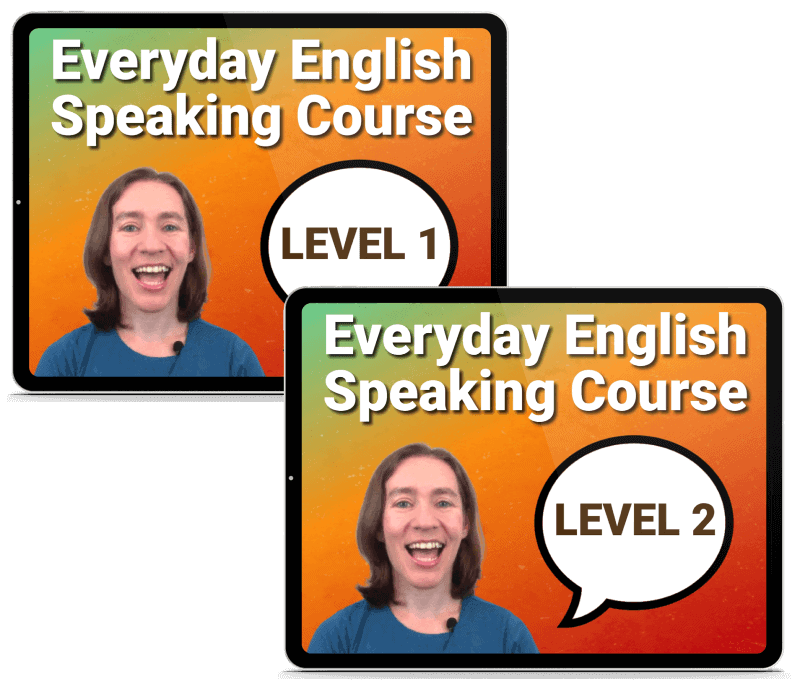
If you’re working on improving your spoken English, you might have a problem with pauses.
Maybe you start a sentence, but you hesitate because you’re not sure how exactly to express your thought in English. You know how to say it in your native language, but you’re just not sure how to translate it.
This is really annoying because even though you can speak some English, you feel slow and incomplete – you definitely don’t feel like you’re fluent.
Today you’re going to learn how to eliminate pauses and hesitation when you speak.
Remember, don’t just read about these tips – put them into practice!
One thing that can help you speak English continuously without pauses or hesitation is:
Learn to think directly in English.
If you think in your native language and try to translate it into English before you speak, it takes too much time. This stops you from speaking fast and fluently.
Also, translating results in sentences that are not correct in English, because the vocabulary, grammar and sentence structure is often different in your native language.
Many students believe that thinking in English is difficult, or that it’s an advanced skill.
That’s not true!
Thinking in English is a skill that you can learn and practice at any level, whether you’re beginner, intermediate, or advanced.
Here’s how to do it step by step:
Step 1 – Thinking in individual English words
For example, when you wake up in the morning, think of words like:
- bed, toothbrush, bathroom, eat, banana, coffee, clothes, shoes
Then when you go to work, think of words like:
- car, job, company, desk, computer, paper, pencil, colleague, boss
During the day, continue to think of the individual English words for everything you see, hear, and do.
Try this exercise – look around you right now and think of all the English words you can. I’d imagine you can think of at least 10 words!
Step 2 – Thinking in complete English sentences
For this step, you think in complete phrases and sentences during the day.
When you’re at lunch, think:
- I’m eating a sandwich.
- My friend is drinking soda.
- This restaurant is very good.
When you’re watching TV, think:
- That actress is beautiful.
- The journalist has black hair.
- He’s talking about politics.
It’s OK if the sentences are very simple. The most important part is to practice and develop the habit of thinking in complete sentences in English.
Step 3 – Functional English
During this step, you imagine having to use English for everything that you need to do. After every time you speak in your native language, think of how you would say that in English. For example, how would you buy a train ticket or order a drink in an English-speaking country?
- A round-trip ticket to Central Station, please.
- Could I have a lemonade with no sugar?
This helps develop your English for real-life situations – even though you are only thinking and not speaking. If during this exercise you don’t know how to say something, check your dictionary later.
If you do this kind of “mental practice” regularly, you will develop the ability to use English in any everyday situation.
Step 4 – Narrative English (telling a story or speaking in English for a long time)
It’s best to do this exercise when you have some time – like when you’re waiting in line or taking public transportation. Think of a memory or a story that you would like to tell an English-speaking friend. Then “tell the story” in your head in English.
Because you are only thinking, not speaking, you can relax and do your best without all the pressure of a real conversation.
Your action item for today:
I hope you can see that you don’t need to be advanced to learn to think in English – you can start today. Your action item is to choose one of the four steps and try it!
- Thinking in individual words
- Thinking in complete sentences
- Functional English
- Narrative English
Thinking about joining the Everyday English Speaking Course?
If you are considering this course, then you might have some questions about it.
Here are some answers to the most common ones:
❓ “How long is the course? What do I get?”
Level 1 of the course includes 45 lessons (text & audio)
Level 2 of the course includes 45 more lessons (text & audio & video)
When you register, you get instant and permanent access to the lessons – there’s NO time limit for studying!
❓ “How much time do I need?”
Each lesson takes about 15 minutes to complete.
❓ “What level of English is necessary?”
Level 1 is great for pre-intermediate to intermediate English learners.
Level 2 is great for upper-intermediate to advanced English learners.
(However, upper-intermediate and advanced learners have also found Level 1 helpful for learning “other ways to say” things, as well as receiving personal feedback from a teacher on their spoken English).
❓ “Can I see a sample lesson?”
Yes! Click on the links below:
Level 1 – Telephone English Phrases
Level 2 – Where are you spending the holiday?
❓ “How can I pay? Is it safe?”
You can use a credit card, debit card or PayPal.
Yes! All payments are made through a secure connection that keeps your information safe, private, and protected.




